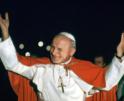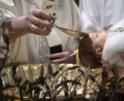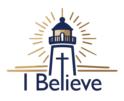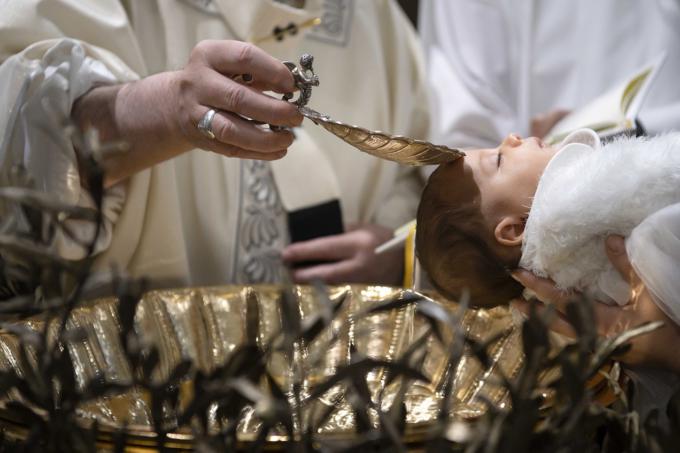
Faith
If there is one word that says "Easter," it is Alleluia.
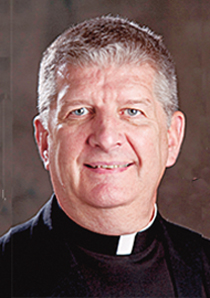
O'Grady
Easter Sunday is both the end and the beginning: the end of the Paschal Triduum and the beginning of the great 50 days of the Easter season. The Resurrection of Jesus Christ and its celebration are so extraordinary that one day or even one week is not enough for the Christian people to celebrate properly. It takes 50 days.
Easter Sunday coincides with the arrival of spring in the northern hemisphere. South of the equator, it's early fall. For the church "up north," the green is starting to take over the brown grass in our yards. The light of daytime is growing longer. And customarily on Easter Sunday new clothes make their appearance.
Did you know that this seemingly secular practice actually has its roots in Easter with its emphasis on baptism? Take off the old, put on the new. In the early church, baptism was celebrated mostly for adults. And the practice was that when the catechumens approached the baptismal font, they removed their old clothes, went down into the baptismal font or baptismal pool, then the bishop -- in those days he celebrated all the baptisms -- pronounced the words used ever since for all of us who are baptized: "I baptize you in the name of the Father, and of the Son, and of the Holy Spirit."
When the newly baptized came up from the pool, he or she put on new white clothes, somewhat like the alb worn by liturgical ministers today. Then, all those baptized received Confirmation before entering the assembly to celebrate the Eucharist for the first time with their new sisters and brothers.
Similarly, other seemingly secular practices, such as the Easter Bunny and Easter Eggs certainly have their origin in pre-Christian spring festivals. But the genius of the church brought these symbols into Christian life. The bunny is associated with the constant birth of new life. Thus, the Easter Bunny is a symbol of the church, which is constantly giving birth to new Christians in the saving waters of baptism. An egg is easily seen as a reference to the Resurrection. Just as Christ burst forth from the tomb in his new life, so the chick bursts forth into life from its shell -- its tomb.
So, new clothes, budding spring flowers, bunnies, or eggs are great ways to use an everyday secular reality or seasonal practice as a means to help, especially children, to see the connection between the "secular" symbols and the divine reality.
The Easter Sunday Masses will see the "rebirth" of the Alleluia at the proclamation of the Gospel, at the solemn dismissal when it is indicated, and notably in the liturgical music and hymns. If there is one word that says "Easter," it is Alleluia. The Gloria also returns.
A highly recommended option in place of the Creed (either the Apostles or Nicene) is the Renewal of the Promises of Baptism with the sprinkling of the entire assembly with the baptismal water blessed at the Easter Vigil.
While the Easter season continues for 50 days, there are eight days at the beginning of the Easter Season that are more intensely Easter. These are called the Octave of Easter and stretch from Easter Sunday to the Second Sunday of Easter. That Second Sunday used to be called "dominica in albis" -- Sunday in white -- because, on this Sunday, the newly baptized appeared again in their white baptismal garments at the Mass.
Previously, the church's calendar had multiple octaves. Now, only Easter and Christmas have one, and that of Easter is, not surprisingly, the most important, and we see this both in the structure of daily Mass, the Liturgy of the Hours, and other liturgies.
Each of the days of the Octave is observed as a Solemnity of the Lord. It is just like a Sunday of Easter, except the Creed is not recited, and there is only one reading -- always from the Acts of the Apostles -- before the Gospel. The Gloria is sung or recited, the Sprinkling Rite may be used in place of the penitential act, and the double alleluias at the dismissal are sung. Other solemnities and feasts and celebrations may not replace these Octave Days.
During the Easter Season, "preference is given to selections from the Gospel of John" in all celebrations (confirmations, weddings, funerals, etc.) This octave week is an exception as there are readings from all four Gospels, each of them an account of an appearance of Christ after his resurrection.
"There are no proofs for the existence of the God of Abraham," said Rabbi Abraham Joshua Heschel (1907-1972). "There are only witnesses." We can adapt this as a thought to keep in mind this Easter season: "There are no proofs for the Resurrection of Jesus Christ. There are only witnesses." Those witnesses are the newly baptized, and you, and me!
Recent articles in the Faith & Family section
-
JP2, I still miss youJaymie Stuart Wolfe
-
Easter and its octaveFather Robert M. O'Grady
-
Forgive usArchbishop Richard G. Henning
-
Bring the Gospel of Hope to the World this Lent!Maureen Crowley Heil
-
Passion of the ChristScott Hahn

